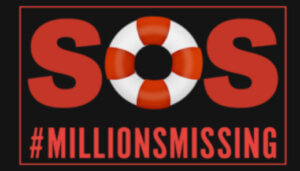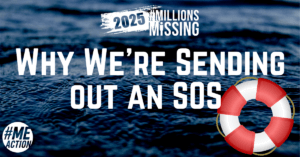Editor’s note: This is an opinion piece regarding NIH’s announcement to invite current grant recipients to apply for additional funding. For more details on the announcement, see here.
In what is a first for ME/CFS research, NIH launched a creative grant expansion program to jump start ME/CFS research in the short term.
Scientists with current NIH grants can apply for supplemental funds to add ME/CFS research to an existing study, or to expand a current ME/CFS study. If this initiative is followed by RFAs – as NIH’s revised response to CFSAC says are forthcoming – the combination could immediately boost research with some additional funds, possibly attract new investigators through incentives to add ME/CFS research to current studies, and build the capacity for expanding the medium term research program at NIH.
Today’s initiative can work to grow the funds for current ME/CFS research quickly, without a drawn out peer review cycle, and conceivably attract new investigators with low risk efforts to add ME/CFS to their work. It is a surprising new tool for us.
Existing grant recipients can apply for $100,000 or $150,000 in supplemental direct costs to add ME/CFS to an existing line of study, or to expand existing ME/CFS research within the goals of the current study. NIH is seeking to apply these funds to: biomarkers in CNS or immunology, biomarkers that characterize subsets, triggers and modifiers of immune responses, autonomic and nervous system abnormalities, etiology and pathophysiology, among other pursuits.
The Notice can be viewed here: http://grants.nih.gov/grants/guide/notice-files/NOT-AI-16-046.html
At a minimum, ME/CFS experts who have current NIH grants can expand them. That is a boost they and their institutions certainly weren’t expecting. A few examples are: Dr. Lipkin, Dr. Klimas, Dr. Jason, Dr. Barao, Dr. Baraniuk.
Additionally, university grant offices should get this notification from NIH, which reinforces the public message that NIH is taking a new approach to ME/CFS. And potentially, researchers in other diseases will be incentivized to think about ME/CFS, and apply to study an ME/CFS cohort with additional funds.
We still need the promised RFAs, a strong intramural study, and a strategic plan that integrates input from ME/CFS experts and advocates. Today, importantly, we did not hear the same old answer from NIH when it comes to grant funding. As one of a group of initiatives to come, we are glad NINDS Director Dr. Walter Koroshetz is leading the Trans-NIH Working Group to try something new.





2 thoughts on “NIH Employs Creative Effort to Boost Current Research for ME/CFS”
Great article, thanks for explaining what the ‘administrative grant’ really means.
I agree that this is good and a creative way to begin to spur research and to get some outside the field looking at this disease.
But these are supplements to existing grants, including those in other areas. These grants that will have their own set of scientific questions and objectives that may not be focused on the most important questions in research for this disease.
We are anticipating RFAs. But in addition to the above method and to the anticipated RFAs, we will also need a substantial commitment to fund investigator initiated grants (including hypothesis generation studies and also early clinical trials) that are centered around this disease.
Comments are closed.